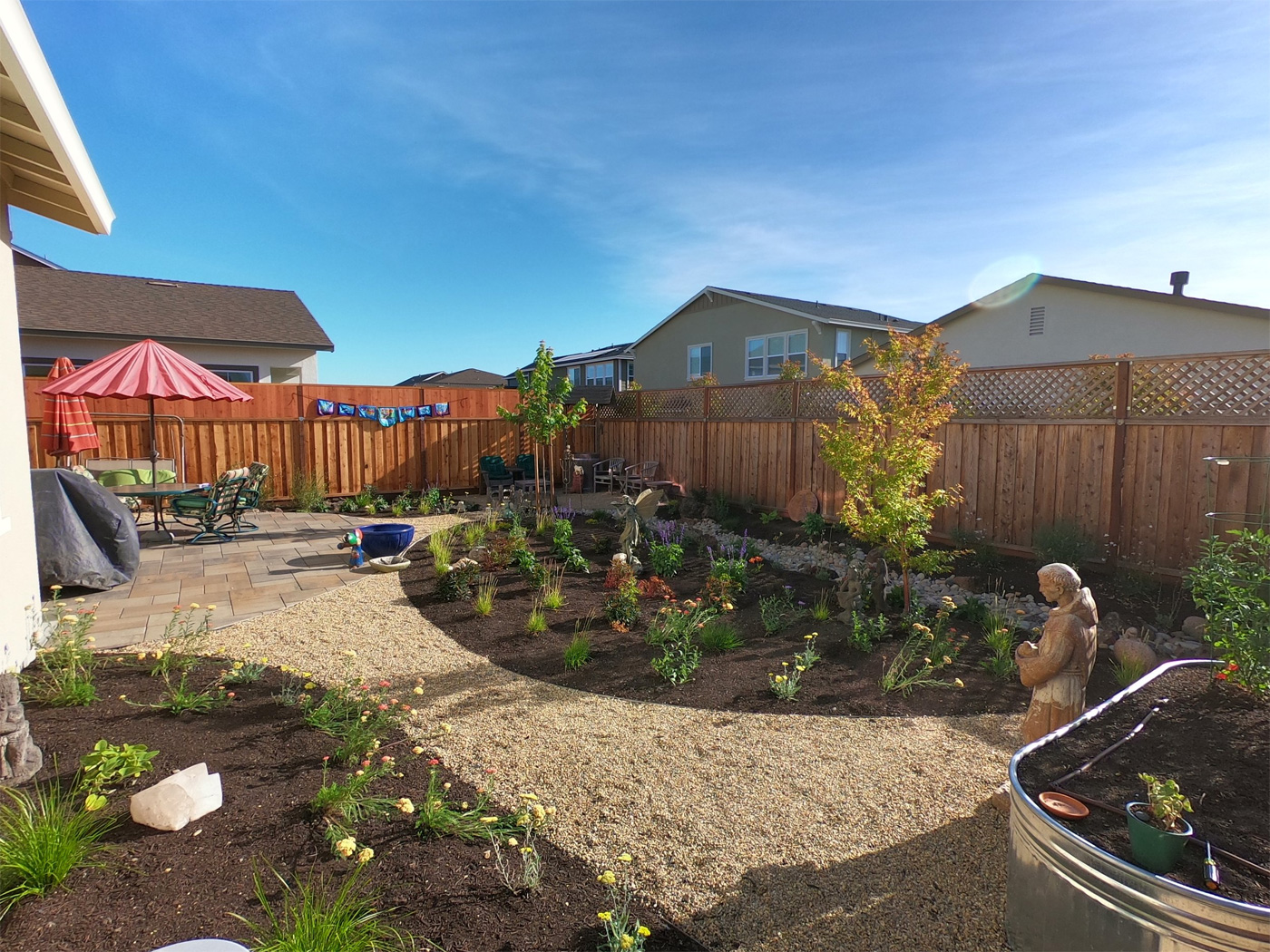
Conserve Like a Pro: Water Saving Techniques for Your Outdoor Space
While we’ve had two consecutive wet winters, our region is still prone to drought and so we must stay vigilant regarding water conservation. Beyond the environmental reasons, there is also a financial incentive to use less water, not to mention overwatering plants is the more common reason for plant deaths in the landscape.
As leading Landscaping Design Sonoma County experts we understand the unique beauty and challenges of the region’s climate and terrain. Here are three tips to reduce water waste in your landscape.
Complete a full inspection of your irrigation system each spring before you turn it on for the summer months
A lot can happen over the winter, debris can build up in the lines, an animal might chew some drip tubing, perhaps during winter pruning you accidentally cut a line. As we tend to have our irrigation systems off from November to April, life continues! And many things can happen to your irrigation system in the process. If you just go ahead and turn it on assuming everything is still fine, you could end up losing a ton of water to previously unknown breaks. If you wait until the last minute to turn on your irrigation once the weather is hot and haven’t done a thorough inspection well beforehand, you might be forced to run the system even with breaks in it just to be sure your other plants don’t suffer.
Be certain to turn on every station from the controller in February and March and make any necessary repairs well before the irrigation season starts. You might be surprised at what you find and very grateful you left yourself time to react! If you don’t have the time or expertise to do so, call an irrigation specialist to help out. Our expert team at Inspired Landscapes would be happy to help.
Irrigate during the nighttime or early morning hours
It’s always best to irrigate when the weather is cool to limit evaporation, so program your irrigation timer to run during the night time or early morning hours. If you run your irrigation during the day time, the heat and sun will cause much of the water to evaporate and be of little use, this is even true for highly efficient drip irrigation systems!
If you have an overhead spray irrigation system, irrigating during the early morning hours is highly preferred because this time of day usually has the least amount of wind. Gusty wind can wreak havoc on the efficiency of sprinklers as the water is easily blown around and ends up off target, often nowhere close to the plants you are trying to irrigate!
Divide your total water requirements into multiple start times to increase absorption
Say a plant needs 1 gallon of water per day and is supplied irrigation via a single drip emitter that puts out 1 gallon per hour. One might assume that running that station for 1 hour per day in a single run time makes the most sense. However depending on your soil type, the soil might not be able to absorb the water that quickly. Think of the soil as a sponge, when a sponge is dry, water beads up and rolls off it relatively easily. However, a damp sponge is easily able to absorb and hold more water. The soil acts the same way, dry soil causes water to run off more quickly, so it’s best to divide your total run time into multiple starts so that the soil around the plant that you are applying water to actually holds onto the water. In this example, perhaps two 30 minute runtimes would suffice, the first allows the soil to dampen and increase its holding capacity, then wait 60 minutes for it to fully absorb, then apply the remaining 30 minutes in a second start time. This same theory can be applied to all types of irrigation systems including sprinklers and in-line drip tubing.
Master the art of water-efficient landscaping! Call us at (707) 395-7474 for your free consultation, and let us show you how to conserve water like a pro while maintaining the beauty of your landscape.





